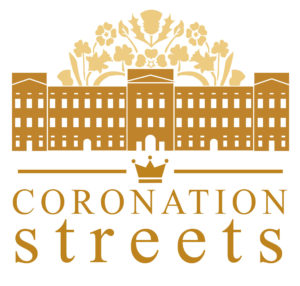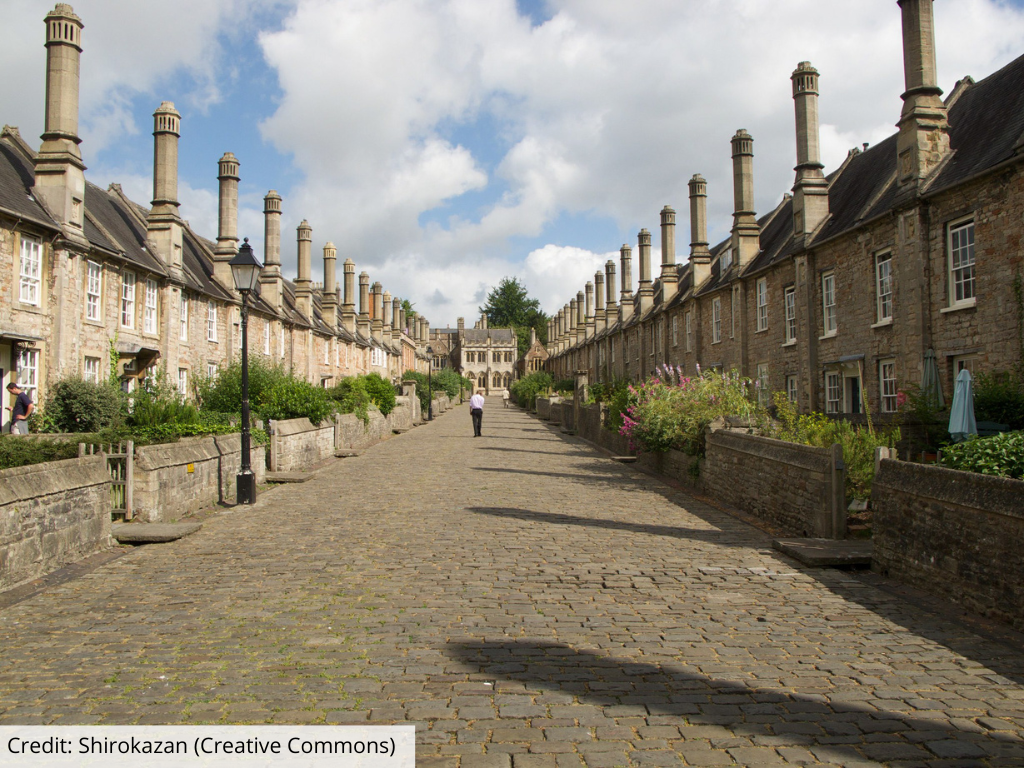A note on our winning street by Create Streets Director, Nicholas Boys Smith
Streets have this habit of hanging about, the most ancient and timeless features of our urban infrastructure. However, Peter Pan-like, they are also forever young. For whereas their routes may be their original routes, the actual experience of moving down them is always being reinvented as street signs, road surfaces and the buildings themselves wear our and are replaced or repaired with each generation and as carts give way to cars and hansoms to hackney cabs.
Even streets which seem antique are younger than they seem. Just as the ashlar stone surface of Westminster Abbey is Victorian or twentieth century. New wine in old bottles.
Our winning Coronation Street, Vicars’ Close, is literally medieval. But this does not mean that it was originally an open sewer with servants regularly throwing slops out of the first-floor windows. The ‘Blackadder’ myth of history is just that, a myth. Many medieval streets and towns were ‘planned’ by their landowners: from city-wide Salisbury to Vicars’ Close in Wells which started life as a cross between employee housing, alms houses and town planning. It was always a good place to be and still is.
It was created in the 1340s for chantry priests who sang in Wells cathedral services and who were known locally as vicars, whence the street’s name to this day. It was built as 44 terraced homes in two rows behind a gateway off the cathedral close. At the north end, a fifteenth century vicars’ chapel and library close off the street. It is the poshest of cul-de-sacs. Marrying priests following the reformation led to larger clerical households and the number of houses was reduced, ultimately, to 27.
Although the medieval core remains in most of the homes, chimney shafts have been raised, roofs relayed, heraldic shields added and windows replaced with fashionable sashes over the centuries. Only a handful have more than a smattering of their medieval structure still predominantly visible. One house (Shrewsbury House) was entirely rebuilt in the nineteenth century after a fire.
So Vicars’ Close is medieval even though it isn’t. Why is it so pleasing though ? Create Streets’ wider work has examined what types of places people instinctively like and, as best we can, why. Nearly everything about the street could have been specifically created to make it feel homely and attractive. It has texture. Its materials do not sheen, bore or threaten. Its stone setts feel timeless though have no doubt been frequently replaced or restored.
The street has pattern and rhythm like a good poem. Those tall late medieval chimneys, above all, march down the street. But it has variety as well. The gates, porches and windows vary from bay to bay, like half rhymes cascading through the different stanzas of the same poem: sash windows or gothic windows, perfectly symmetrical or slightly misaligned windows; picket gate or arched doorway.
The street feels safely enclosed. It has an enclosure ratio of about one to two (height to width) which most people find reasonably pleasing and homely. Each of the houses has a modest front garden. These provide shrubs and greenery which improve the street. (People consistently and provably like a bit of urban greenery). But those modest front gardens are also perfect for chatting to your neighbours and supporting a strong neighbourly community. If front gardens are non-existent, people tend to scuttle straight indoors. If they are too large, they never speak to their neighbours, safely shielded by their privet hedges. A small garden is perfect for a serendipitous chat as you trim the roses or pop out to go to the shops. Good fences, and modest front gardens, do literally make for good neighbours.
Perhaps most artfully of all (and surely deliberately?) the street appears longer than it is due to the crafty deployment of false perspective. The houses at the northern end of the street are 9 feed closer together than those at the street’s ‘entrance’ underneath the gatehouse. This exaggerates the sense of distance and tricks the brain into imputing into the street more length than it really has. Those medieval masons may have had no architectural qualifications but they knew a thing or two about making the brain content and the heart soar. (The street’s designer may have been the English master mason, William Joy or, just as probably, those working for him).
In short Vicars’ Close feels safe to be in and ridiculously beautiful to look at from the setts underfoot to the gothic chapel at one end and the gatehouse at the other with Wells Cathedral rising heaven-ward behind.
It is certainly a street fit for a king and worthy of the fine city of Wells. I cannot discover from a quick scan of Mother Google whether the King, when Prince of Wales, ever visited Vicars’ Close. I suspect he has but it would not appear to be recent.
At any rate I do hope that he gets the chance to go. I think he will like it.
If you read like to read more about the relationships between the elements of place and popularity do have a look at study I co-authored, Of Streets and Squares.
Nicholas Boys Smith



